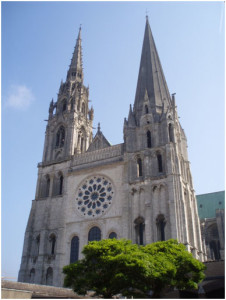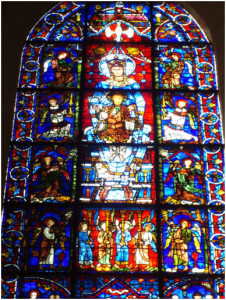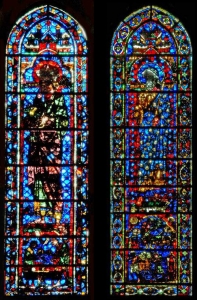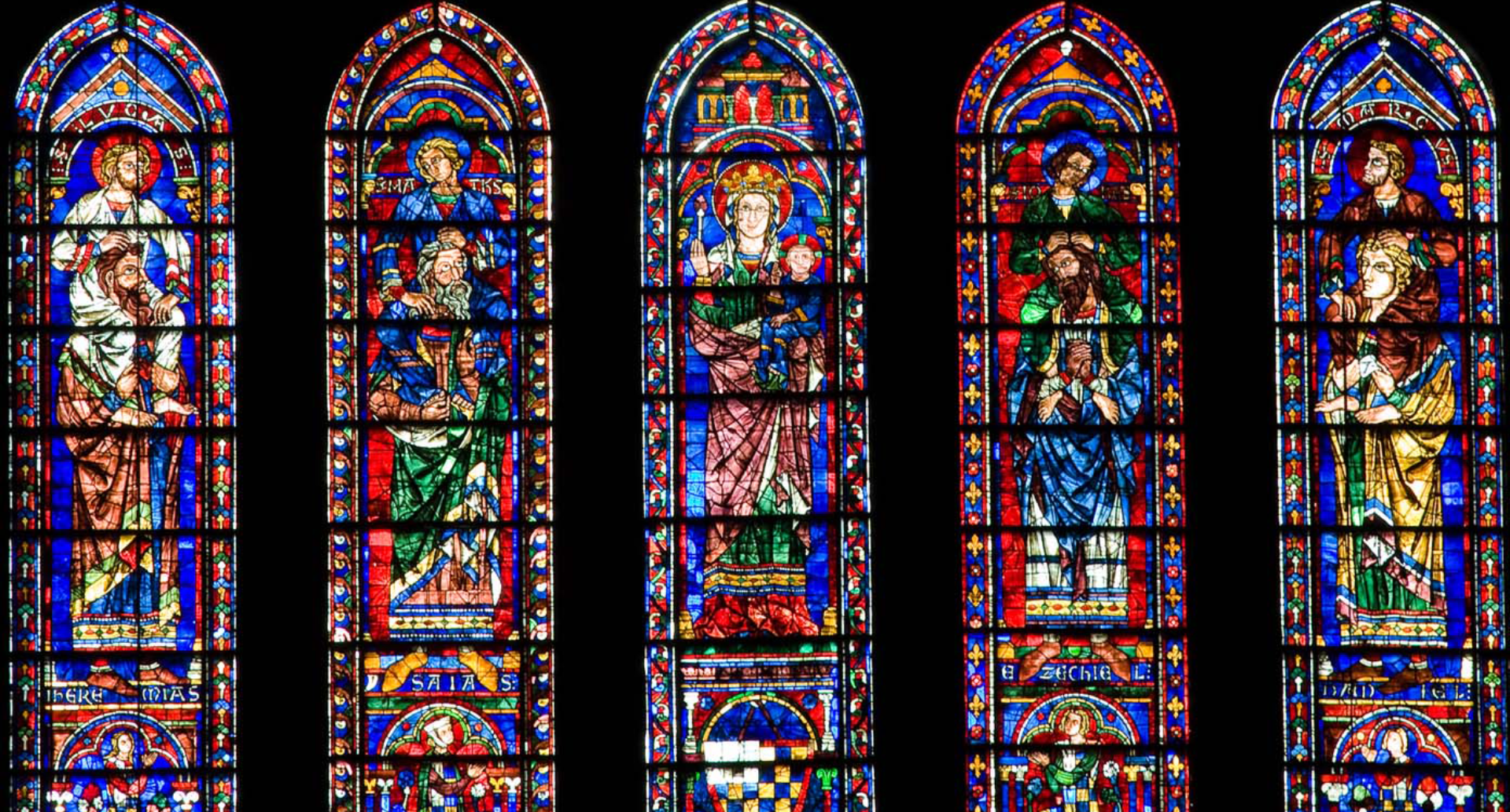By Craig Kuehl and Elizabeth Seitz
While we at AFC may be a bit biased, we can think of no better day-trip for visitors to Paris, or residents – or even better, weekend getaway – than the great cathedral town of Chartres.
While anytime is a great time to visit Chartres, whose Cathedral of Notre-Dame de Chartres was placed on the very first list of UNESCO World Heritage Sites, now is always best. If you do visit the cathedral, you will have a chance to wonder at the glories of this beautiful Gothic space, while at the same time getting a glimpse into the restoration work carried out by a multitude of partners, including the American Friends of Chartres (AFC) and our sister organization, Chartres, sanctuaire du Monde. And the charming town of Chartres itself is well worth a visit.
Before I describe AFC’s work at Chartres, however, I’d like to entice you to visit the cathedral by quoting a wonderful blog post* by Elizabeth Seitz of French Affaires. [Dr. Seitz has given AFC permission to quote extensively from and edit her post for our purposes.]

Located about 50 miles southwest of Paris, the charming town of Chartres makes a great day trip from the French capital. Local trains run approximately every hour from the Gare Montparnasse in the 14th arrondissement. The easy journey takes about an hour and costs around 23 euros round trip. The church is a 10-minute walk from the station.
In a country that abounds with gorgeous Gothic churches and cathedrals – Notre Dame de Paris, St. Denis, Reims, Amiens, Bourges, Rouen, to name a few – what is it that makes Chartres so special?
First, Chartres is the best-preserved of all of Europe’s Gothic cathedrals. Today, most of its stained glass and sculptures remain intact from when they were created in the 1100 and 1200’s. Wonderfully enough, the cathedral’s sacred art survived the ravages of time, the mobs of the French Revolution and the destruction of the two World Wars. Sometimes, the acts of preservation were deliberate. In 1939, for example, les vitraux (the stained-glass windows) were removed prior to the invasion of the Germans. They were then restored and replaced after the war. As a result, Chartres has the largest collection in the world of 12th and 13th C. stained glass under one roof.
Second, the architectural design of Chartres is amazingly unified. The fact that the church was built in the space of about 30 years – very quickly as far as cathedral-building goes – is a main contributor. A bit of history: There have been five churches on the site of Chartres, each previous one destroyed by fire or war. After the great fire of 1194, the cathedral as we know it today was rebuilt in the early 1200’s. To be fair, some details of the church have changed over time, like the north spire which was destroyed by lightning in 1506 and then rebuilt in the flamboyant Gothic style. (This answers the question about why the two spires are different!) But it is important to remember that most medieval churches have undergone significant alterations since their construction. At Chartres, the architecture of this medieval church has remained remarkably consistent over the centuries.
British-born Malcolm Miller began giving tours of the cathedral in 1958. Miller is at his best when leading English-speaking tours of the church and its iconography. Mr. Miller continues to give private cathedral tours, by reservation only (millerchartres@aol.com).
Miller likened the cathedral to a library, yet the texts are not books; they are the narratives contained in the 12th and 13th century-stained glass and sculptures. At the time the church was built, paper was nearly non-existent, and printing had not been invented. Most people could not read or write but they could ‘read’ the sacred texts of the colorful windows. According to Miller, Chartres cathedral is like a book with the church’s architecture as its spine. The text is the unfolding of time from Creation to the Last Judgment as seen in the medieval stained glass and sculpture.
As we took our tour, we could see that restoration of the church is ongoing. It is clear which parts have been newly cleaned and which still are dark with soot and pollution whether in stone or glass. A couple of weeks after our visit, a large section of the church was going to be closed off for some time as the painstaking work began. American Friends of Chartres (AFC) raised funds to restore Bay 140 of stained glass, in the upper clerestory of the nave. AFC had previously financed the restoration of five lancets in the South Portal, and the restoration of five 12th century statue-columns. It is now raising funds for Bays 117 and 125 in the Northern Transept to be restored in 2022-23.

Meanwhile, here is a look at the newly restored Notre Dame de la Belle Verrière window with the Blue Virgin which is perhaps the most famous stained glass at Chartres. The startlingly bright colors, including the famous Chartres blue, just pop out at you.
To sum up, visiting Chartres is to be transported to the Middle Ages and its rich sacred art, a very meaningful experience whether one is religious or not. If you have the time and the inclination to go, here are a few thoughts for making the most of your journey: Go on a Saturday – the charming town is bustling with activity and the weekly outdoor market. When you first arrive, see the cathedral in the morning light. Then go back in the afternoon for a whole different view. Take a private tour with Malcolm Miller before he retires or with Anne Marie Woods (annemariechartres@gmail.com) .Take the time to decipher an entire cycle of stained glass – and notice the characters at the bottom who sponsored the piece whether bakers**, carpenters or other medieval tradesmen. Have a nice lunch outdoors at one of the restaurants by the church – and enjoy the view of the cathedral nearby. Be sure and walk around the exterior perimeter of the church – the details and angles are fascinating. And last but not least, relish the less crowded church atmosphere when compared to Notre Dame in Paris. Bonne visite!


Any time you visit you will be able to see AFC’s other major project, completed in 2013, the restoration of the five lancet windows of the south transept.
*I have edited the post to reduce its length and to interpolate some small changes. For the complete, unedited post, see http://www.elizabethnew.com/category/sacred-france/
** The Bay 140 windows are popularly known as “Bakers’ Windows,” because of the depiction of various scenes of baking in the bottom panels of the two lancet windows.


